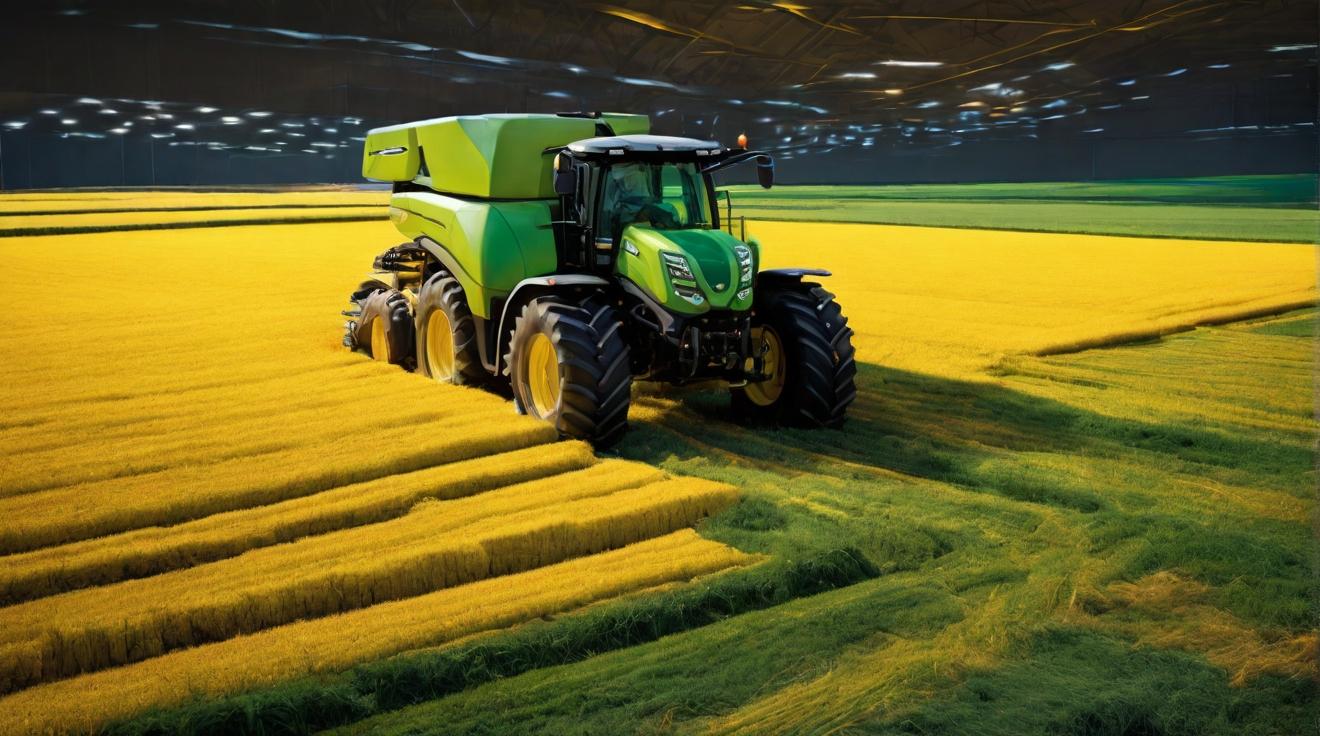New Holland Revolutionizes Farming with IntelliSense Bale Automation Technology
In a groundbreaking development for the agricultural sector, New Holland, a global pioneer in farming equipment, has introduced its IntelliSense Bale Automation technology. This innovative solution is set to redefine how farmers manage their baling operations, offering unprecedented levels of automation and efficiency.
The Future of Farming: Automation and Efficiency
The advent of IntelliSense Bale Automation marks a significant step towards fully autonomous baling, a goal that New Holland is rapidly advancing towards. By integrating cutting-edge lidar sensor technology with sophisticated software controls, this system enables tractors to navigate windrows in real time and adjust their speed automatically, optimizing the baling process.
Brad Littlefield, a New Holland marketing manager with expertise in livestock and dairy operations, detailed the capabilities of this system. "It’s a combination of two main features," he explained. The first is an auto guidance system enabled by a lidar sensor that guides the tractor along the windrow. The second feature allows the baler itself to control the tractor's speed based on real-time processing needs. This dynamic duo of features ensures that material throughput is maximized while maintaining the highest standards of quality and efficiency.
How It Works: A Technological Breakthrough
The IntelliSense Bale Automation utilizes a puck-shaped lidar sensor mounted atop the tractor’s cab. This sensor projects a beam approximately 25 feet ahead, enabling it to detect the windrow’s edges and direct the tractor accordingly. Meanwhile, a control box, discretely placed beneath the seat, sends instructions to the tractor’s computer system, ensuring seamless operation.
Farmers can set the desired number of slices per bale and a maximum speed limit, allowing the baler to automatically adjust the tractor's forward speed to meet these criteria. Although the system does not automate turn-arounds at row ends, it disengages easily, allowing for manual control when necessary.
The Advantage for Modern Farmers
In today's fast-paced agricultural environment, where timing and efficiency can significantly impact productivity and profit margins, the IntelliSense Bale Automation represents a significant advantage. "You might have 72 hours to get things done," Littlefield pointed out, referring to the critical window for baling operations before weather conditions can affect forage quality. With this system, the necessity for constant manual control is eliminated, reducing operator fatigue and allowing for longer, more productive workdays.
Exclusive Compatibility and Availability
Currently, the technology is exclusively compatible with New Holland’s 2022 and 2023 BigBaler Large Square Balers, as well as with Class 3 ISOBUS tractors. Plans are in place to offer the IntelliSense Bale Automation system as a factory-fit option starting in 2025, but it is available now as a dealer-installed accessory, providing immediate benefits to forward-thinking farmers looking to optimize their operations.
As agriculture continues to evolve, New Holland’s IntelliSense Bale Automation technology is a shining example of how innovation can lead to more autonomous, efficient, and profitable farming practices. With this new technology, New Holland is not just keeping pace with the future of farming; it is setting the pace, driving the industry forward into a new era of productivity and sustainability.
About the Author
Andy Castillo brings a wealth of experience and a diverse background to his reporting on the agricultural sector. With a career spanning a decade in journalism and a passion for farming innovation, Castillo's insightful analysis helps shine a light on the technologies transforming farming and agricultural practices worldwide.
Analyst comment
Positive news. The introduction of New Holland’s IntelliSense Bale Automation technology revolutionizes farming by offering unprecedented levels of automation and efficiency in baling operations. This technology integrates lidar sensor technology and software controls, allowing tractors to navigate windrows and optimize the baling process. It eliminates the need for constant manual control, reducing operator fatigue and improving productivity. This innovation sets the pace for a new era of productivity and sustainability in the agricultural industry.













